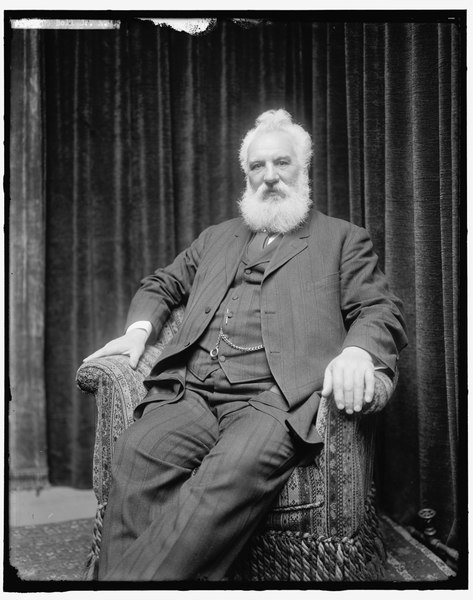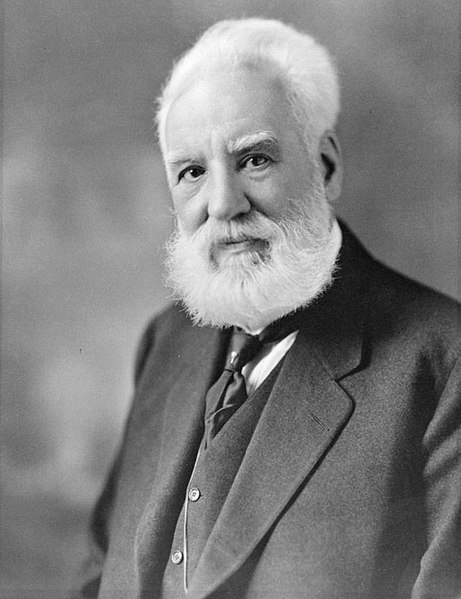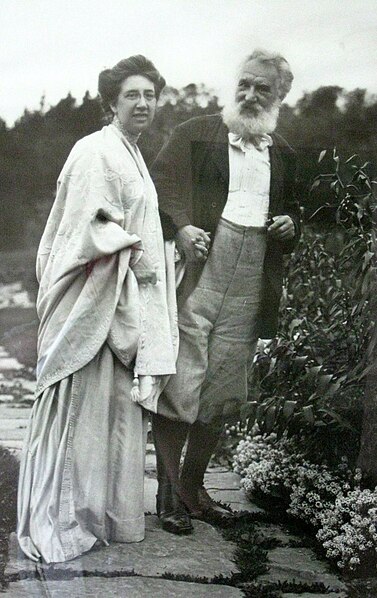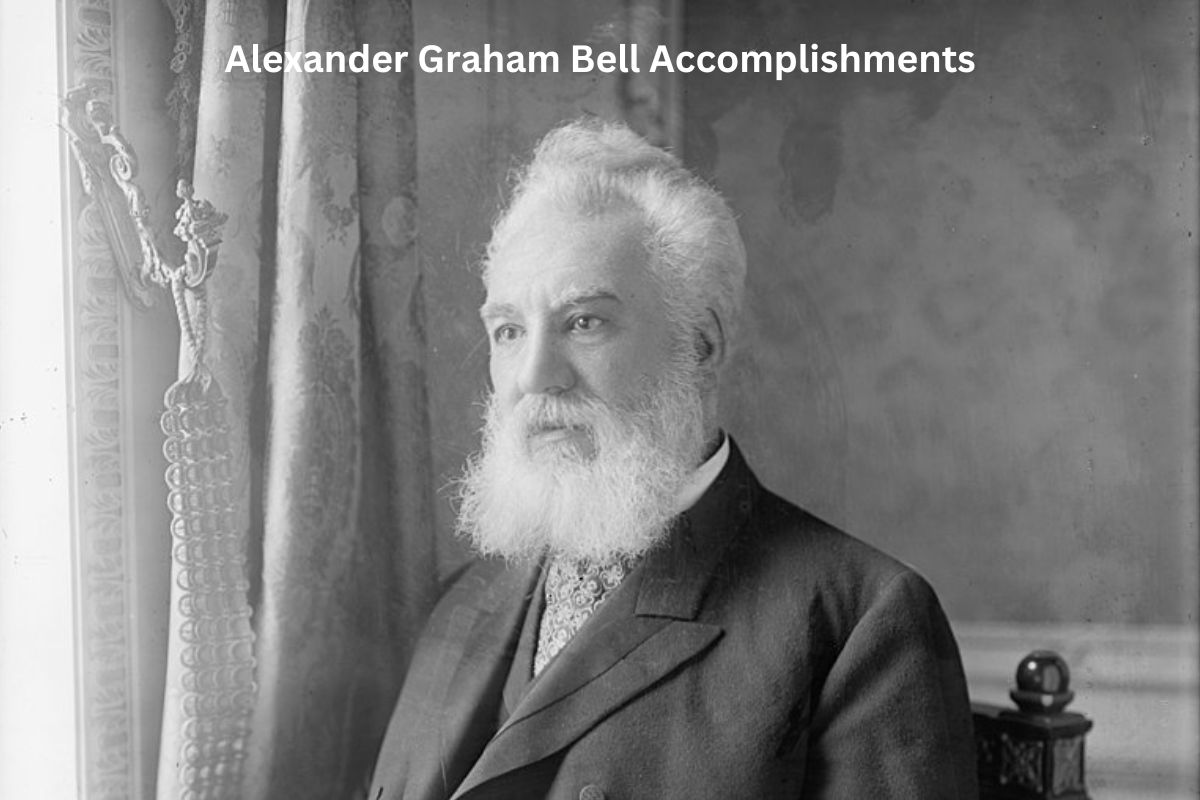Alexander Graham Bell, born in 1847, was a pioneering inventor, scientist, and educator who left an indelible mark on multiple fields of study and technology.
While he is best known for inventing the telephone in 1876, his remarkable career encompassed a wide range of accomplishments.
From his groundbreaking work with the deaf community to his innovations in aviation, hydrofoils, and medical technology, Bell’s contributions continue to influence modern communication, transportation, and scientific research.
Additionally, his leadership at the National Geographic Society further cemented his legacy as a driving force in the exploration and dissemination of geographic knowledge. This brief introduction highlights the multifaceted nature of Alexander Graham Bell’s influential career.
Accomplishments of Alexander Graham Bell
1. Invention of the Telephone
In 1876, Alexander Graham Bell successfully invented the telephone. This groundbreaking invention allowed for the transmission of sound over long distances using electrical signals.
Also Read: Facts About Alexander Graham Bell
Bell’s telephone was a significant advancement in communication technology and marked the beginning of a new era in human interaction. It revolutionized the way people communicated, enabling real-time voice conversations over great distances, which was previously unimaginable.

2. Co-Founder of the Bell Telephone Company
Building upon his telephone invention, Alexander Graham Bell co-founded the Bell Telephone Company in 1877. This company played a pivotal role in the widespread adoption and commercialization of the telephone.
Over time, it evolved into the American Telephone and Telegraph Company (AT&T), which became a telecommunications giant and a key player in the development of the global telecommunications industry.
3. Development of the Photophone
In 1880, Bell invented the photophone, another innovative communication device. The photophone transmitted sound on a beam of light, using varying light intensities to reproduce sound waves.
This early wireless communication technology was a precursor to modern fiber-optic communication systems.
Also Read: Timeline of Alexander Graham Bell
Although it was not as widely adopted as the telephone, the photophone contributed to the exploration of optical communication methods and laid the foundation for future developments in the field.
4. Work in Aeronautics
Alexander Graham Bell had a keen interest in the field of aeronautics and made significant contributions to early aviation. In 1907, he co-founded the Aerial Experiment Association (AEA), a group dedicated to the development of experimental aircraft.
The AEA successfully designed and built several experimental airplanes, including the Silver Dart, which made its first powered flight in Canada in 1909. Bell’s work with the AEA contributed to the early advancements in aviation and laid the groundwork for future developments in powered flight.

5. Hydrofoil Experiments
Bell also made notable contributions to naval engineering through his experiments with hydrofoils. In 1919, he designed and developed the HD-4 hydrofoil boat.
This hydrofoil boat was a pioneering innovation in maritime technology, as it could lift itself out of the water on its hydrofoils, reducing water resistance and allowing for higher speeds.
The HD-4 set a world water speed record of 70.86 miles per hour, demonstrating the potential for hydrofoils to revolutionize water transportation.
6. Metal Detector Invention
Alexander Graham Bell’s expertise extended beyond communication and transportation. In 1881, Bell developed an early version of the metal detector known as the “induction balance.”
He created this device in response to a request from President James A. Garfield, who had been shot and had a bullet lodged in his body. Bell’s metal detector successfully located the bullet, aiding in medical efforts to treat the president.
This invention marked one of the earliest practical applications of electromagnetic technology for detecting metal objects within the human body, making it a significant contribution to the field of medical diagnostics.
7. Work with the Deaf
Alexander Graham Bell had a personal connection to the deaf community, as his mother and wife were both deaf. This connection motivated him to work extensively in the field of deaf education and communication.
Bell considered himself primarily a teacher of the deaf and developed various methods and tools to help deaf individuals communicate more effectively. He taught at schools for the deaf, including Boston University, where he was a professor of vocal physiology.
His work in this area greatly improved the lives of many deaf individuals and contributed to the development of American Sign Language (ASL).

8. Development of the Graphophone
Bell made significant contributions to the development of sound recording technology. He worked on improving the phonograph, eventually creating the Graphophone in collaboration with Charles Sumner Tainter.
The Graphophone used wax-coated cardboard cylinders for recording sound. It was a more practical and durable alternative to Thomas Edison’s earlier phonograph, which used delicate and fragile materials for recording. The Graphophone’s technology played a pivotal role in the early history of sound recording and reproduction.
9. Optical Speech Machine
Bell conducted research in the field of speech and voice production. One of his inventions was the “visible speech” machine, which aimed to convert sound waves into visible light patterns.
This device was a significant step toward understanding how speech sounds are formed and represented visually. While the optical speech machine had limited practical applications, it contributed to the scientific understanding of speech production and phonetics.
10. Involvement in the National Geographic Society
Alexander Graham Bell served as the president of the National Geographic Society from 1896 to 1904. During his tenure, he played a crucial role in expanding the society’s influence and reach.
Under his leadership, the National Geographic Society promoted geographic exploration, funded expeditions, and published the National Geographic Magazine.
Bell’s efforts helped make the society a renowned institution dedicated to the advancement of geographic knowledge, scientific discovery, and cultural understanding. His legacy within the National Geographic Society continues to influence the organization’s mission and activities to this day.
